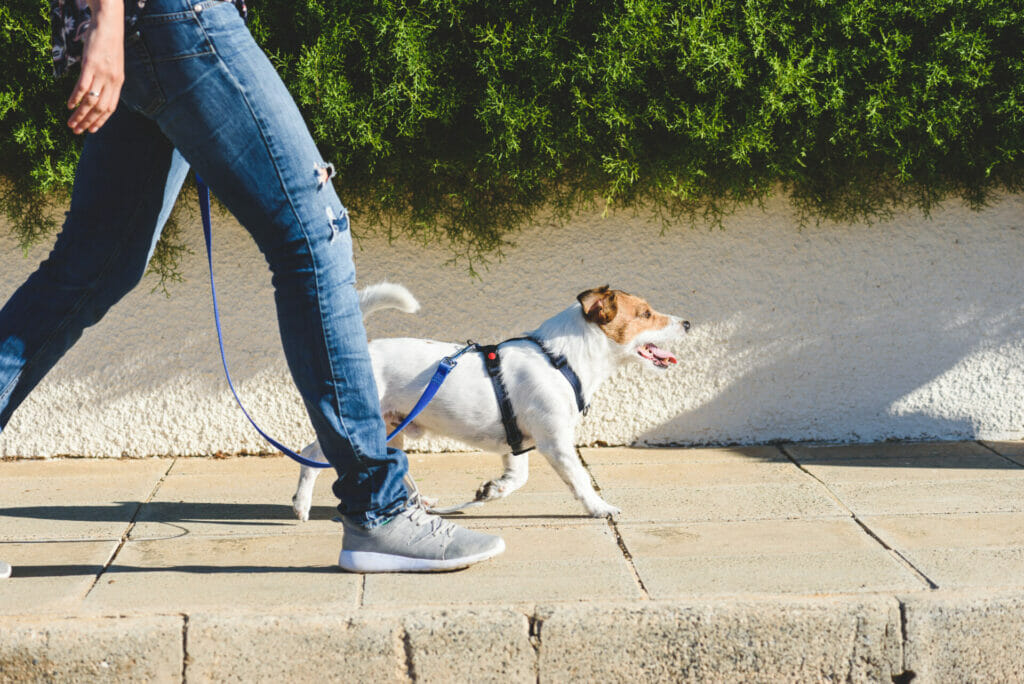Does your dog eagerly await their walk? While many pups love a stroll, it can be hard to know exactly how much you should walk your dog. Here’s how much you should be walking your furry friend.

Consider Age For Walking Dog
Young puppies have energy to spare, but too much exercise can harm their developing joints. Consult your vet and breeder for breed-specific advice. Large breeds, in particular, need careful monitoring until around two years old.
As dogs age, their walking needs change. Senior dogs with arthritis may require shorter, gentler walks. Consult your vet for personalized guidance based on your dog’s health. On the other hand, walking can help older dogs maintain high levels of physical fitness and support graceful aging. The amount of walking your senior dog should be doing will be unique to your dog’s specific health, and what your veterinarian recommends is best.
Health First
If you have concerns about your dog’s health, a vet will be able to let you know how much your dog can safely walk. If your vet has concerns about your dog walking, they may refer you to a veterinary physical therapist for further evaluation. A veterinary physical therapist will be able to develop a physical therapy routine that will help get your dog back up and walking more comfortably.
Build Endurance
Walking is an excellent source of exercise for dogs and can be a relatively low-impact way to help improve your dog’s overall levels of physical fitness. Walking boosts your dog’s fitness, but start slow to prevent injury. Begin with short walks of 10-15 minutes, gradually increasing duration. Even energetic dogs benefit from a gradual buildup. When your dog is comfortable walking a specific distance, slowly increase the walks. Even if your dog seems to have lots of energy, it’s a good idea to build their strength and stamina to prevent strain and injury.
Check The Weather For Walking Dog
Adjust walking routines based on weather conditions. Extreme heat or cold can be harmful, causing burns or discomfort. Pay attention to sidewalk temperatures and paw safety in all seasons. For example, hot weather can make sidewalks and streets dangerously hot for your dog’s feet. In cold weather, paws may be too cold. In winter, salt and chemical de-icers are frequently put on sidewalks and streets in the winter, which can irritate and even burn your dog’s paw pads.
Respect Your Dog’s Comfort
If your dog shows distress during walks, don’t force it. You can find a dog trainer who utilizes positive reinforcement approaches to help you build your dog’s comfort and confidence in walking with plenty of treats is a good idea. In the meantime, if walking is upsetting for your dog or not something you enjoy, try to find other forms of mental and physical exercise and enrichment that you can incorporate into your dog’s daily routine.
Listen to Your Dog:
If your dog displays discomfort or pain while walking, stop right away. Consult your vet if issues persist. They’ll diagnose any underlying health problems and advise on when it’s safe to resume walking.




















